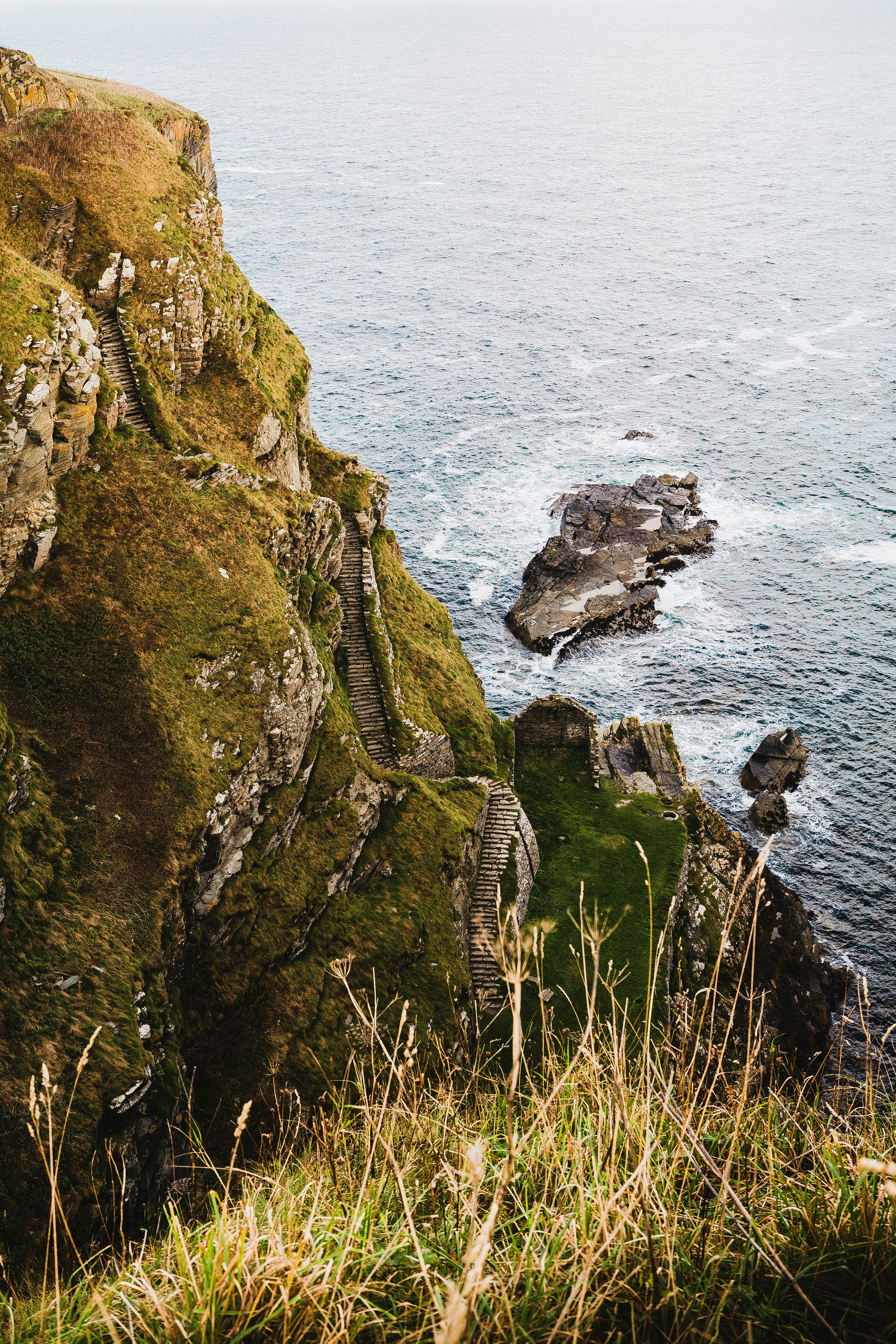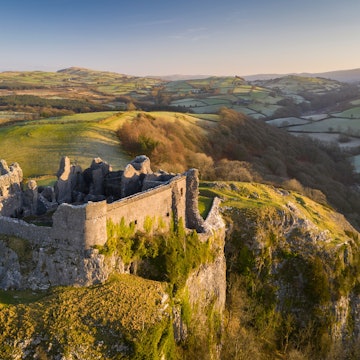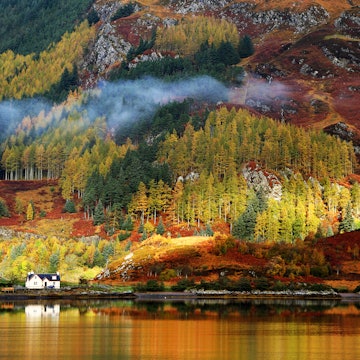

The road snakes up to the viewpoint of Bealach na Ba from the inlet of Loch Kishorn. Daniel Alford / Lonely Planet
Bleakly beautiful, the North Coast 500 is Scotland’s very own Route 66. Buckle up for a road trip around Britain’s outer limits, where you’ll find otherworldly landscapes and down-to-earth welcomes.
Editor's note: Please check the latest travel restrictions before planning any trip and always follow government advice.
Day 1 – Inverness to Invergordon, 25 miles
Even in its brisk overture, just another A-road ferrying commuters and HGVs to and from Scotland’s northernmost city, the NC500 can’t help exuding a sense of hardy portent. Thirty minutes into the journey is the Storehouse of Foulis, a restaurant in an 18th-century granary that sounds like a place where Game of Thrones’ Jon Snow might victual his men for a ride to the Wall.
It looks it, too, with steam rising from a platter of potato-and-sausage stovies, through a view of windswept bracken and the blue-black waters of Cromarty Firth. Working off Highland food becomes a routine duty on the NC500. I reach the lofty 18th-century Fyrish Monument after an energetic hike over a carpet of brown heather studded with fairy-tale red toadstools.

The reward for seeking out this tribute to Scotland’s colonial past – built after a siege in India, won by the local laird – is a prospect of its uncertain future. Moored down the firth looms a fleet of mothballed North Sea oil rigs. Further on are the turrets of Kincraig Castle, a baronial clan-mansion reinvented as a grand but convivial hotel.
“People think the NC500 is all about the great outdoors,” says owner Ray Grant, proffering a fireside armchair in the wood-panelled sitting room, “so it’s nice when they find out the indoors aren’t bad, either.”

Day 2 – Invergordon to John O’Groats, 98 miles
The NC500 sticks fast to Scotland’s benign but blustery northeast coast, through villages of rust-streaked whitewash. Traffic thins and so does the tarmac. I make a footwell-muddying stop at Dunrobin Castle, pimped-up apotheosis of the Victorian aristocracy’s Loire-in-the-Highlands phase, its mighty towers circled by buffeted flocks of crows.
Into Caithness, and the coastline starts to tilt and crack, waves crashing distantly against cliffs topped with Macbeth-like ruins. At Whaligoe Steps, a steep flight of 350 hand-hewn stairs descends one dramatic cleft to the remains of an old herring station, legacy of the periodic “silver darling” booms that brought blurts of wealth to a desperately poor region.

The Steps’ custodian, Davie Nicolson, stands by a ramshackle outbuilding festooned with antlers and glazed with doors from the old red phone boxes that are an enduring feature of the NC500.
“They got the name from the whales that used to get beached down there,” he says, the tips of his Hulk Hogan ’tache shuddering in the briny gusts. “In my granny’s time they lived for a year off one of those. See that little waterfall going off the cliff? When the wind turns that flies about 90 metres straight up in the air.”
Another 20-odd-mile drive north brings me to John O’Groats. A drab scatter of windswept pebbledash, it seems an underwhelming start or finish line for all those transnational journeys.
But at second glance, through the yawning glass frontage of a Scandinavian-style cabin at Natural Retreats (now called Together Travel at John O'Groats), the views are majestic. Huge vessels battle through the Pentland Firth, one of the world’s mightiest tidal straits, its bed scattered with hundreds of wrecks. Behind them loom the sheer-sided Orkneys, each cliff crowned with a lighthouse.
Later, with the wood burner aglow and a bottle of NC500 IPA in my hand, a humbling spectacle annexes the world outside that great big window. High above those wind-whipped tussocks, a wavering, ghostly searchlight of luminous green steadily creeps across the star-jewelled sky. The northern lights, to the rest of the world down south. Heavenly Dancers in the soulful poetry of Caithness.

Day 3 – John O’Groats to Durness, 90 miles
Striking out west, I stop first for lunch at Captain’s Galley, a fabled seafood restaurant created by Jim and Mary Cowie in an old salmon ice-house. It’s the best thing about Scrabster, rather bluntly dismissed in the menu’s introduction as “a no-nonsense fishing harbour”.
“Every family up here has roots in the sea,” says Jim, his gentle voice echoing lightly off the ancient vaulted ceiling. The soft charm that defines the Caithness character is a dependable antidote to the hostility of their weather.
Jim can look back on 50 years in the fishing trade, and his focus on sustainability is as much down to good taste as good sense.
“We never order fish at all: I just go down to the quay every day and ask the skippers for their best and freshest catch.” Every dish on the menu is accompanied by the name of the boat that brought it in. The Thai-style broth Jim magics up is a glorious tribute to both the raw materials and his own self-taught culinary skills, acquired from a standing start when he opened the place in 2002.
In his wife Mary’s words, “He came home one day and said: 'I’ve just bought a restaurant.' I didn’t know what to say – he’d never even boiled an egg!”

After Thurso, tracking west along the UK mainland’s top edge, the NC500 really gets into its stride. Highland cattle, huge horns parting their ginger New Romantic fringes, begin to mass impassively by the ever-lonelier road. Hardy surfers, marooned on yawning white sands, drag boards towards the violent sea.
There are swooping sections of drama, much of them single-track, that make it impossible not to grip the wheel with a flinty-eyed half-smile, star of your own drone-shot car advert – no mean feat in a rented one-litre Ford Focus.
At Dunnet Head, the northernmost point on the British mainland, the NC500 passes Dunnet Bay Distillery, which somehow crafts a delicate gin from the hairy-chested botanicals that survive up here. Staff forager Hanna Miedema plucks rose root, rowan and the orange sea buckthorn berries from what she calls “the baked bean bush”.
With a moody, restless dusk falling, I descend into the jagged, fern-bearded mouth of Smoo Cave, a Tolkienesque venue by name and nature: you expect to be asked a riddle to gain entrance, or stumble across a mossy pile of treasure in the gloom. The inner cave, home to a thunderous waterfall, is by local repute the gateway to hell.

Day 4 – Durness to Ullapool, 94 miles
“I just love the Sutherland autumn,” shouts countryside ranger Donald Mitchell, bullying the car door open and letting half the Beaufort scale howl in. “This dramatic weather really suits our scenery.”
Just northwest of Durness, Balnakeil Bay is a magnet for the bold on days like these – from the sand-kiters careering madly along the beach to the hungry gannets crashing headlong into the offshore tumult.
Everything Donald loudly points out seems an accompaniment to the fortissimo elemental symphony, from Cape Wrath, western Europe’s largest bombing range and routinely pounded by thousand-pound shells, to the massive wedges of folded rock, legacies of a violent geological past that provided early evidence for plate-tectonic theory. And the ivy-smothered ruins of Balnakeil church, whose interred residents include Donald McMurdo, a 17th-century hitman who boasted of throwing 18 bodies down Smoo Cave’s blowhole.
Brutally depopulated by potato famine and Highland clearances in the 18th and 19th centuries, the county of Sutherland retains an enhanced sense of sparse isolation. The NC500 passes through hardbitten settlements where mains electricity and water are recent novelties. It’s a super-rural time warp where mobile-phone coverage is rare, and Sunday still means Sunday – the few things that are open on other days are almost all closed on the Sabbath.
One of the exceptions is Cocoa Mountain in Durness. I stop at this chocolatier and café for a tray of tartan-topped truffles and a cup of hot chocolate so rich you could stand your spoon in it.
Life up here often seems to require an appropriate sense of the outlandish: Cocoa Mountain’s home is a Cold War-era listening station now repurposed as Balnakeil Craft Village, housing various small businesses – among them an art gallery and hair salon run by a retired German porn actor. Even the weather turns weird as the NC500 snakes around the lochs that cleave the coastline towards Ullapool: rainbows, horizontal cloudbursts, pools of sunset gilding sheep-speckled crags.

Day 5 – Ullapool to Torridon, 86 miles
“My life up here is just one long excuse for a very scenic cup of tea,” says adventure guide Tim Hamlet, tending a sooty camp kettle on the slender beach that girdles Loch Lurgainn. Before us lie the canoes we have dragged from the still waters; high above, half lost in the mist, towers the gorse-skirted bulk of Stac Pollaidh, a troll’s fortress of a mountain.
After watching the NC500’s Gothic vistas remotely unfold through a wet windscreen, how right and rewarding it feels to get down and dirty with them. Tim grew up in a remote village in Nepal, but cannot imagine ever tiring of his adopted homeland’s extraordinary environment and its recreational bounty.
“Though some of the locals don’t quite get it,” he reflects, tossing a chunk of cake to his excitable border collie Kiera. “To them the landscape just means work – hard, cold work.”

South of Ullapool, a fishing town hunkered up behind a brave little row of seafront cottages, the NC500 weaves through Rossshire, a realm of scurvy grass and steep rock threaded with tumbling, peaty cascades. Fleets of low-slung islands gather offshore, dotted with white farmhouses and bordered by Olympic-ring salmon farms.
Just west of Torridon and deep in the dank gloaming, the headlights pick out the bare, wet stones of the Bothy at Ben Damph: this trip’s off-grid, full-Withnail last-night stand. With both wood burners ablaze, the ancient crofter’s hovel is gradually imbued with a kind of spartan cosiness: flames flickering on the stacked rock walls, wisps of gale sneaking in through them. Out in the wild darkness, rutting stags roar and bellow. Owls hoot.
Day 6 – Torridon to Inverness, 62 miles
Morning brings extravagant views of the loch beneath the bothy, and the standing army of Scots pines that guard its shoreline. A 4WD tour of the Ben Damph Estate fails to turn up pine martens or sea otters, but offers many stags, blank-eyed from their nocturnal rigours.
Rejoining the NC500, the road hugs the coast as it wends its way south. Alone on a bald escarpment, the Applecross Smokehouse is run by retired fisherman Derrick MacIver and his wife Lorna. Derrick slams all manner of local produce in his smokebox – cheddar, sea trout, scallops – but his toothsome speciality is hot-smoked salmon.
“It’s more of a cooked product, really, nothing like the slimy cold-smoked stuff,” he says. “With all the brining and marinading in whisky, it’s three days’ work before it even goes in the smoker.”

Applecross village, with its jaunty terrace of seaside homes, stands guard before the NC500’s crowning challenge and spectacle. Bealach na Bà is the steepest road in Britain, a frayed thread of single-track tarmac that twists madly up a rearing mountain moor. At its bitter, squally brow, an almighty panorama shrieks out in every direction, but mainly downwards.
Hemmed in by flanks of savagely distorted granite, the NC500 tumbles blithely towards the distant, silvery waters of Loch Kishorn, its trajectory pregnant with the possibilities of fatal misjudgement. “The 2018 Ford Focus,” says a reedy inner voice as you release the handbrake. “Drive the dream.”
This article was originally published in November 2018 and updated in September 2020.
This article appeared in the December 2018 edition of Lonely Planet Magazine. Tim Moore travelled to the Scottish Highlands with support from Visit Scotland. Lonely Planet contributors do not accept freebies in exchange for positive coverage.















